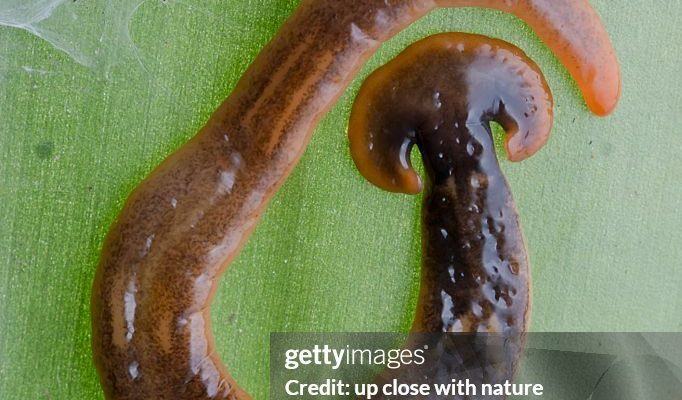
Imagine a delicate balance in nature, where each creature has its role, akin to pieces of a puzzle. Unfortunately, the Malayan hammerhead worm’s puzzle pieces are being disturbed. With predators preying on them and environmental changes taking a toll, their existence is under threat. Let’s dive deeper into understanding the dangers these worms face and why protecting them matters.
Understanding the Malayan Hammerhead Worm
Before we dive into the threats, it’s important to know what makes the Malayan hammerhead worm unique. These worms belong to the family Bipalium, and they can grow up to 30 centimeters long! Their distinctive hammer-shaped head is not just for show; it plays a role in hunting and navigation. Unlike earthworms, they are predatory, primarily feeding on other small invertebrates, which helps control those populations in their habitat.
These worms are usually found in tropical regions, often hidden under leaf litter or in moist environments. They thrive in warm conditions, which is important when considering how climate change can impact their survival. When conditions are right, these worms can become quite numerous, helping to maintain the health of the ecosystem they inhabit.
Natural Predators of the Malayan Hammerhead Worm
Just like any creature, the Malayan hammerhead worm has its share of predators. Birds, reptiles, and even larger invertebrates see them as a tasty snack. Here’s the thing: when you’re a small, flat worm, you don’t have many defenses. Some birds, for instance, have learned to recognize these worms as a food source, and their hunting skills can significantly reduce hammerhead worm populations.
Among their most effective predators are frogs and toads. These amphibians are masters of catching small moving creatures. For the Malayan hammerhead worm, this means a constant threat. If coupled with habitat loss—where amphibians might no longer have enough food or shelter—the hammerhead worms can face a tough time surviving.
Impact of Predation on Hammerhead Worm Populations
The impact of predators on the Malayan hammerhead worm isn’t just about numbers—it’s a complex relationship. When predators are abundant, they can cause significant declines in worm populations. This is similar to how the presence of wolves can control deer populations in the wild.
Moreover, if environmental conditions change, leading to fewer predators, the hammerhead worm’s population might increase too quickly, upsetting the balance of their ecosystem. This cycle of dependency can make their populations incredibly vulnerable to fluctuations in the environment, ultimately impacting biodiversity.
Environmental Threats Facing Malayan Hammerhead Worms
Climate change is one of the most significant threats to the Malayan hammerhead worm. As temperatures rise and weather patterns shift, the moist habitats that these worms prefer are at risk. Warming climates can lead to drying soils and altered rainfall patterns, which can make it challenging for these worms to survive.
Habitat destruction is another major concern. As areas are developed for agriculture or urbanization, the natural environments that hammerhead worms depend on shrivel away. Without their preferred habitats, these worms struggle to find food and reproduce.
Pollution and Its Effects
Pollution from agricultural runoff and waste can further endanger hammerhead worm populations. Chemicals like pesticides and fertilizers can seep into the soil and water, harming not just the worms but the entire ecosystem. When the soil’s health diminishes due to pollution, the food web is affected, making survival for the Malayan hammerhead worm even more difficult.
Additionally, plastic pollution is a growing concern. Worms can ingest tiny plastic particles, mistaking them for food, which can lead to severe health issues or death. It’s a harsh reality that highlights how interconnected our planet is—one action in pollution can ripple through various species.
Conservation Efforts for Protecting Hammerhead Worms
Conservation plays a crucial role in protecting the Malayan hammerhead worm and its habitat. Efforts include creating protected areas where these worms can thrive without the stress of predators and environmental changes. Education is also vital. By raising awareness of the importance of these creatures, we can encourage more people to engage in conservation activities.
Restoration projects are another way to help. This can involve replanting native vegetation and reducing the use of harmful chemicals that pollute the soil. When people understand the role of the hammerhead worm in the ecosystem, they become more invested in preserving their homes.
Promoting Biodiversity
Encouraging biodiversity is key to protecting the Malayan hammerhead worm. A rich variety of species helps maintain ecological balance. Programs that promote wildlife conservation and sustainable practices can aid in creating a healthier environment for these worms.
Every small change can lead to significant impacts. Whether it’s reducing waste, advocating for better agricultural practices, or supporting local conservation groups, everyone can contribute to making a difference.
In summary, the Malayan hammerhead worm faces a host of threats, from natural predators to environmental changes. Their hammer-shaped heads and unique behaviors make them a captivating subject of study, but their survival hangs in the balance. By understanding the intricate relationships they have within their ecosystems, we can advocate for their conservation.
Preserving the Malayan hammerhead worm isn’t just about saving one species; it’s about maintaining the whole tapestry of life that contributes to a healthy environment. Let’s remember that even the smallest creatures have a role to play—just like the hammerhead worm in its habitat. Taking action to protect them benefits not just their species but the entire ecosystem they help support. So, why not do our part to ensure they continue to thrive?

